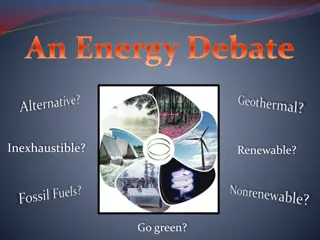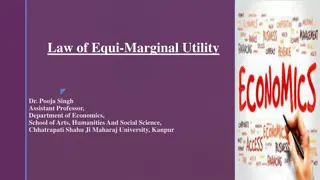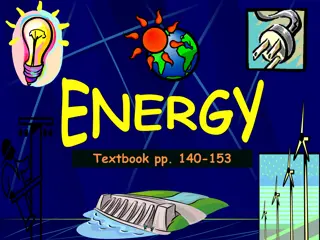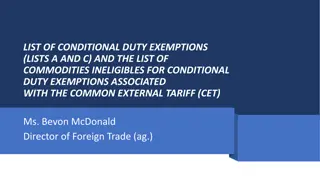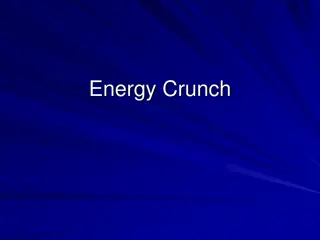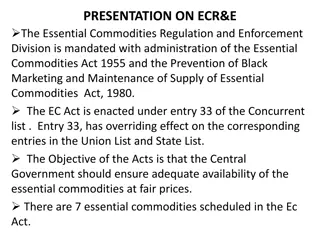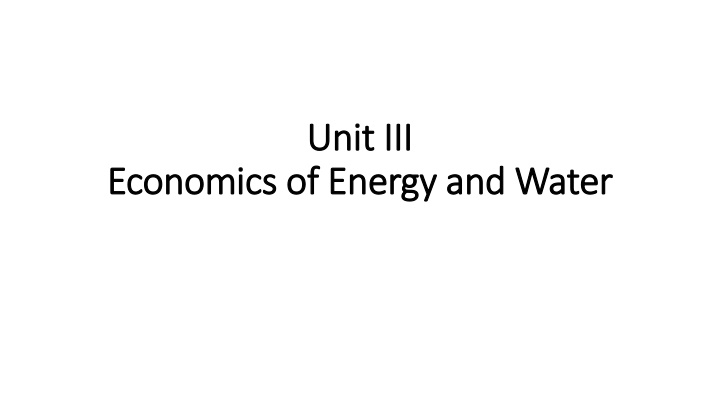
Economics of Energy: Forms, Sources, and Commodities
Energy is a fundamental concept in economics, with various forms, sources, and commodities. Classification is based on forms such as heat, kinetic, potential, and more, and sources including renewable and non-renewable options like solar, wind, and hydro energy. Energy commodities like crude oil and electricity power human activities like lighting, water heating, and electronic functions. Understanding these aspects is crucial for managing energy resources efficiently.
Download Presentation

Please find below an Image/Link to download the presentation.
The content on the website is provided AS IS for your information and personal use only. It may not be sold, licensed, or shared on other websites without obtaining consent from the author. If you encounter any issues during the download, it is possible that the publisher has removed the file from their server.
You are allowed to download the files provided on this website for personal or commercial use, subject to the condition that they are used lawfully. All files are the property of their respective owners.
The content on the website is provided AS IS for your information and personal use only. It may not be sold, licensed, or shared on other websites without obtaining consent from the author.
E N D
Presentation Transcript
Unit III Unit III Economics of Energy and Water Economics of Energy and Water
Concept of Energy: Energy is defined as the capacity of a physical system to perform work. Energy is a conserved quantity; the law of conservation of energy states that energy can be converted in form, but not created or destroyed. In simple terms energy is defined as power derived from the utilization of physical or chemical resources, especially to provide light and heat or to work machines.
Classification of energy: Energy Forms Sources Commodities Renewable Non-renewable
Energy is classified on the basis of: Forms Sources Commodities
I. On the basis of forms: a) Heat energy b) Kinetic energy c) Potential energy d) Mechanical energy e) Light f) Electrical energy g) Magnetic energy h) Chemical energy i) Nuclear energy j) Geothermal energy
II. On the basis of sources: a) Non renewable sources of energy (Conventional) b) Renewable sources of energy ( Non conventional) Solar energy Wind energy Geothermal energy Biomass energy Hydro energy
III. Energy Commodities It comprises of those matter that can be used to provide energy services for human activities, such as lighting, water heating, cooking, electronic activity, etc. Examples include; crude oil, natural gas, coal biomass, hydro, electricity, etc. There might be overlap between types of energy. For example, a swinging pendulum has both kinetic and potential energy and depending on its position may have electrical and magnetic energy.








